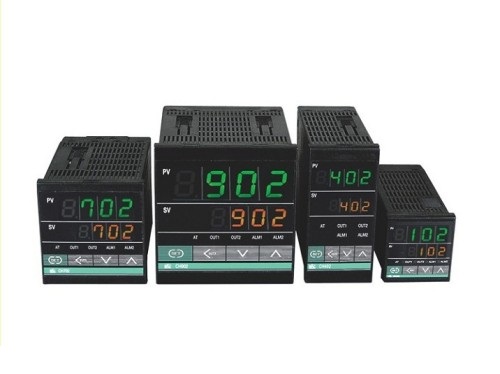From the granules being fed into the barrel, to the final piece coming from the mold, injection mold temperatures are very important. Problems with quality in injection molding can occur because the flow of the heated plastic is disrupted due to the mold being over or under cooled. Under-cooled parts don’t solidify properly and stick to the mold1. Over-cooled parts may not form completely and design details could be lost due to the mold not filling correctly. Over or under cooling can also cause shrinkage or warping of the parts1. Several areas of the molding process demonstrate the importance of temperature control in injection molding.
Barrel Temperatures

A major area that demonstrates the importance of temperature control in injection molding is the barrel of the machine. The barrel in injection molding machines the plastic travels through usually have between 3 and 5 individual heating zones6. The material you are using sets the barrel temperature. The temperature settings are determined by the material’s supplier. Therefore, the machine’s temperature settings should change with the material being used for the production pieces.
The heating zones of the barrel are most often set to gradually increase as the material moves from the back of the barrel toward the mold. Temperatures differences from the rear to the front of the barrel can range from 50 to 80⁰ F6.
If the temperature in the rear zone is too high it can cause the plastic to melt too soon and block the flow of the granules into the barrel. The cooling water from the feed throat takes away most of the rear zone heat, so too high a temperature can also waste energy6.
Adjusting temperature in the middle zones of the barrel is the best way to use barrel temperature. The heat in this section will be mixed by rotation before the plastic reaches the front zone and any variation in temperature will be removed6.
The temperature in the front zone should match the actual desired temperature for the material. Once in the front zone of the barrel the material will not be mixed again, so any plastic that is unevenly heated won’t set correctly6. Therefore, slowly increasing temperature from the rear zone through the middle zone, and maintaining temperature in the front zone, is the best process for obtaining quality parts6.
Nozzle Temperatures

The nozzle area of the injection mold is also one that demonstrates the importance of temperature control in injection molding. It is important that the nozzle temperature be lower than the mold temperature4. If the nozzle temperature is higher than the mold by too much it can cause the plastic to drool. If the temperature in the nozzle is too low, though, it can cause the plastic to decompose and possibly block the nozzle4.
Mold Temperatures

Another area that proves the importance of temperature control in injection molding is the mold itself. Maintaining optimal mold temperature reduces unit costs, ensures quality of product, and promotes uniform molding of parts3.
Mold temperature can affect product quality in various ways. Too low of a temperature can create knit lines where the plastic comes together, and can produce an incomplete part. Too high of a temperature can cause warping or blistering in the part2.
The mold temperature should be lower than the temperature in the barrel. This allows the material to cool down. The temperature in the mold is usually between 150 and 350⁰ F2. Cooling lines filled with water are used to lower the temperature and lines with oil are used to heat the mold and maintain a temperature above water’s boiling point when needed.
Maintaining optimum mold temperature for the material being used will improve part quality, lower cost of production, improve accuracy of parts, lower part distortion, and shorten the time it takes to cool down3.
Temperature Controller

A temperature controller installed on the injection molding machine can ensure the proper temperature is maintained during processing. Temperature controllers, or control units, preheat the mold before the melted plastic is pushed into the mold. The control units keep the mold heated to the set temperature point by circulating a coolant through the mold. The heat that has been produced by the melted plastic is absorbed from the mold by the coolant which keeps the mold at a proper temperature for precise molding5.
Injection molding is a process used around the globe. Producing quality, cost efficient products is important for many industries and businesses. The importance of temperature control in injection molding is a major component of producing those quality products.
Sources
- Ptonline.com – https://www.ptonline.com/articles/troubleshooting-mold-temperature-control
- AccuTherm- http://accutherm.com/blog/importance-temperature-control-plastic-injection-molding/
- Lanxess- https://techcenter.lanxess.com/scp/americas/en/techServscp/79183/article.jsp?docId=79173
- Crescent Industries- http://info.crescentind.com/blog/bid/59146/5-factors-important-to-injection-molding
- Delta systems- https://www.deltatsys.com/industries/injection-molding-temperature-controller
- Paulson- https://www.paulsontraining.com/molding-machine-control-set-setting-barrel-temperatures/
